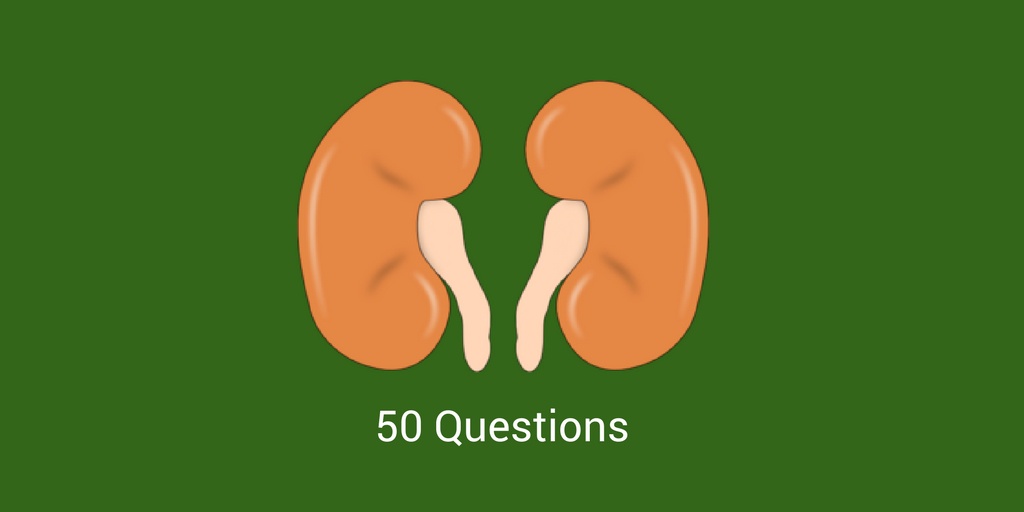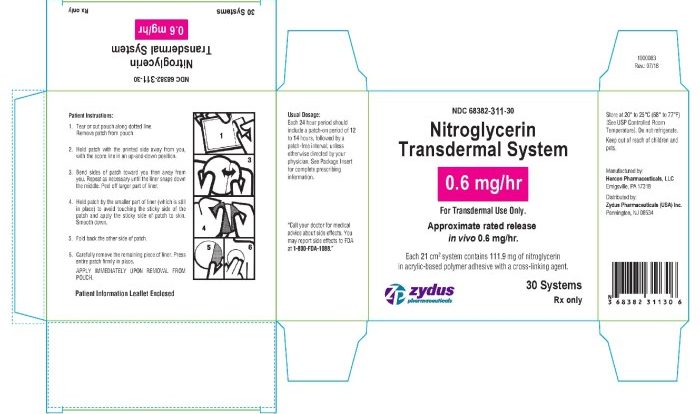Acute Kidney Injury NCLEX Questions: Dive into a world of essential knowledge for nurses, unraveling the complexities of acute kidney injury through engaging discussions, insightful explanations, and thought-provoking questions.
Delve into the depths of AKI, exploring its causes, manifestations, diagnosis, management, and prevention, all while honing your NCLEX-taking skills with a collection of practice questions and rationales.
Definition of Acute Kidney Injury (AKI)
Acute kidney injury (AKI) refers to a rapid and abrupt decline in kidney function over a short period, typically within hours or days. It is a serious condition that can lead to significant morbidity and mortality if not promptly recognized and managed.
The pathophysiology of AKI involves a complex interplay of factors that can damage the kidneys’ structural and functional units, the nephrons. These factors can be broadly categorized into:
- Pre-renal factors:Conditions that reduce blood flow to the kidneys, such as dehydration, hypovolemia, or hypotension.
- Renal factors:Direct injury to the kidney tissue itself, such as from toxins, infections, or inflammatory processes.
- Post-renal factors:Obstruction of the urinary tract, such as from kidney stones or an enlarged prostate, which prevents the elimination of urine and leads to backpressure on the kidneys.
AKI can manifest with a wide range of clinical presentations, depending on the severity of the injury and the underlying cause. Common symptoms include:
- Oliguria or anuria (decreased or absent urine output)
- Edema (fluid retention)
- Hypertension (high blood pressure)
- Nausea and vomiting
- Fatigue and weakness
AKI is classified into stages and grades based on the severity of the injury and its impact on kidney function. The most commonly used classification system is the Kidney Disease: Improving Global Outcomes (KDIGO) criteria:
Stages of AKI
The KDIGO criteria defines three stages of AKI based on the increase in serum creatinine levels or the decrease in urine output:
- Stage 1:Mild AKI, with a 1.5-2.0-fold increase in serum creatinine or a decrease in urine output to less than 0.5 mL/kg/hr for more than 6 hours.
- Stage 2:Moderate AKI, with a 2.0-2.9-fold increase in serum creatinine or a decrease in urine output to less than 0.2 mL/kg/hr for more than 12 hours.
- Stage 3:Severe AKI, with a 3-fold increase in serum creatinine, a decrease in urine output to less than 0.2 mL/kg/hr for more than 24 hours, or anuria for more than 12 hours.
Grades of AKI
The KDIGO criteria also defines three grades of AKI based on the presence of additional markers of kidney injury, such as increased blood urea nitrogen (BUN) levels or the presence of proteinuria:
- Grade 1:No additional markers of kidney injury
- Grade 2:Presence of one additional marker of kidney injury
- Grade 3:Presence of two or more additional markers of kidney injury
The combination of stage and grade provides a more comprehensive assessment of the severity of AKI and guides treatment decisions.
Causes of AKI
Acute kidney injury (AKI) can arise from a wide range of factors, broadly classified into three categories: prerenal, renal, and postrenal causes.
Prerenal Causes
Prerenal causes of AKI occur when there is a reduction in blood flow to the kidneys, often due to conditions that affect the heart, blood vessels, or fluid balance.
- Hypovolemia (dehydration)
- Hypotension (low blood pressure)
- Heart failure
- Liver cirrhosis
- Sepsis
Renal Causes
Renal causes of AKI directly affect the kidney tissue, leading to damage or dysfunction.
- Glomerulonephritis (inflammation of the kidney’s filtering units)
- Tubular necrosis (damage to the kidney’s tubules)
- Interstitial nephritis (inflammation of the kidney’s connective tissue)
- Drug toxicity (e.g., aminoglycosides, NSAIDs)
- Ischemia (lack of oxygen to the kidneys)
Postrenal Causes
Postrenal causes of AKI occur when there is an obstruction or blockage in the urinary tract, preventing the flow of urine.
- Ureteral stones
- Urethral stricture (narrowing of the urethra)
- Prostate enlargement
- Bladder outlet obstruction
- Neurogenic bladder (loss of bladder control due to nerve damage)
Clinical Manifestations of AKI
AKI manifests with a wide range of clinical presentations, from asymptomatic to life-threatening conditions. The signs and symptoms vary depending on the severity and underlying cause of AKI.
Signs and Symptoms of AKI
- Oliguria or anuria:Decreased or absent urine output is a hallmark of AKI. However, this is not always present, especially in early stages.
- Edema:Fluid retention due to impaired kidney function can lead to swelling in the extremities, face, and abdomen.
- Hypertension:AKI can disrupt the body’s fluid and electrolyte balance, leading to increased blood pressure.
- Nausea and vomiting:Impaired kidney function can lead to the accumulation of waste products in the blood, causing nausea and vomiting.
- Fatigue and weakness:AKI can cause anemia due to decreased erythropoietin production, leading to fatigue and weakness.
- Confusion or disorientation:Accumulation of toxins in the blood due to impaired kidney function can affect brain function.
Potential Complications of AKI
AKI can lead to several complications if left untreated. These include:
- Electrolyte imbalances:Impaired kidney function can disrupt electrolyte balance, leading to conditions like hyperkalemia, hypocalcemia, and hyponatremia.
- Fluid overload:AKI can impair the body’s ability to regulate fluid balance, leading to fluid retention and pulmonary edema.
- Infection:AKI can increase the risk of infection due to impaired immune function and fluid retention.
- Cardiovascular complications:AKI can worsen heart function and increase the risk of cardiovascular events.
- End-stage renal disease (ESRD):Severe or prolonged AKI can lead to irreversible kidney damage and ESRD.
Diagnosis of AKI: Acute Kidney Injury Nclex Questions
Diagnosing acute kidney injury (AKI) involves a comprehensive evaluation that includes laboratory tests, imaging studies, and urine analysis.
Laboratory Tests
- Serum Creatinine:A rise in serum creatinine is the most common indicator of AKI. However, creatinine levels may not increase until after significant kidney damage has occurred.
- Blood Urea Nitrogen (BUN):BUN levels typically rise in AKI, but they can also be elevated in other conditions, such as dehydration and gastrointestinal bleeding.
- Electrolytes:Abnormalities in electrolyte levels, such as hyperkalemia, hyponatremia, and hypocalcemia, can occur in AKI.
Imaging Studies
- Ultrasound:Ultrasound can visualize the kidneys and assess their size, shape, and echogenicity.
- Computed Tomography (CT) Scan:CT scans provide detailed images of the kidneys and can identify structural abnormalities, such as kidney stones or tumors.
- Magnetic Resonance Imaging (MRI):MRI scans can provide detailed images of the kidneys and assess blood flow.
Urine Analysis
- Urine Output:Oliguria (decreased urine output) is a common sign of AKI.
- Urine Specific Gravity:A low urine specific gravity (<1.010) suggests impaired kidney function.
- Urine Protein:Proteinuria (presence of protein in the urine) can occur in AKI due to damage to the glomerular filtration barrier.
- Urine Sediment:The presence of red blood cells, white blood cells, or casts in the urine can indicate kidney damage.
KDIGO Criteria
The Kidney Disease: Improving Global Outcomes (KDIGO) guidelines provide criteria for defining AKI:
- Increase in Serum Creatinine:An absolute increase in serum creatinine of ≥0.3 mg/dL (≥26.5 μmol/L) within 48 hours.
- Percentage Increase in Serum Creatinine:An increase in serum creatinine of ≥50% within 7 days.
- Urine Output:Urine output of<0.5 mL/kg/hr for more than 6 hours.
It’s important to note that the presence of one or more of these criteria, in conjunction with clinical symptoms and risk factors, is necessary for the diagnosis of AKI.
Management of AKI
Management of AKI involves addressing the underlying cause, providing supportive care, and preventing complications. The principles of AKI management include fluid resuscitation, electrolyte correction, and maintaining hemodynamic stability.
Indications for Dialysis in AKI
Dialysis may be indicated in AKI when conservative measures fail to control fluid overload, electrolyte imbalances, or uremic symptoms. Dialysis options include hemodialysis and peritoneal dialysis.
Nursing Interventions in Managing AKI Patients
- Monitoring vital signs and fluid status
- Administering medications as prescribed
- Providing nutritional support
- Educating patients and families about AKI and its management
- Providing emotional support and counseling
Prevention of AKI

AKI can be prevented by taking steps to maintain adequate hydration and avoid exposure to nephrotoxic medications. It is also crucial to recognize and promptly treat underlying conditions that can lead to AKI, such as sepsis, dehydration, and hypotension.
Early Recognition and Treatment, Acute kidney injury nclex questions
Early recognition and treatment of conditions that can lead to AKI are essential for preventing the development of this condition. This includes prompt recognition and treatment of sepsis, dehydration, and hypotension, as well as other conditions that can cause kidney damage.
Early intervention can help to prevent or minimize kidney damage and improve the chances of a successful recovery.
NCLEX Questions on AKI
NCLEX-style questions on AKI assess the nurse’s knowledge of the pathophysiology, clinical manifestations, diagnosis, management, and prevention of AKI. Here are a few sample questions and rationales:
Question 1
Which of the following is a risk factor for AKI?
- Diabetes mellitus
- Sepsis
- Dehydration
- All of the above
Rationale:All of the listed options are risk factors for AKI. Diabetes mellitus, sepsis, and dehydration can lead to decreased renal blood flow and subsequent damage to the kidneys.
Question 2
Which of the following is a clinical manifestation of AKI?
- Oliguria
- Edema
- Hypertension
- All of the above
Rationale:Oliguria, edema, and hypertension are all common clinical manifestations of AKI. Oliguria refers to decreased urine output, edema is caused by fluid retention due to impaired renal function, and hypertension can result from fluid overload and activation of the renin-angiotensin-aldosterone system.
Question 3
Which of the following laboratory tests is used to diagnose AKI?
- Serum creatinine
- Urine protein
- Blood urea nitrogen (BUN)
- All of the above
Rationale:Serum creatinine, urine protein, and BUN are all laboratory tests used to diagnose AKI. Elevated serum creatinine and BUN indicate impaired renal function, while increased urine protein may suggest glomerular damage.
Question 4
Which of the following interventions is appropriate for the management of AKI?
- Fluid resuscitation
- Dialysis
- Antibiotics
- All of the above
Rationale:Fluid resuscitation is essential to correct dehydration and maintain renal perfusion. Dialysis may be necessary to remove waste products and excess fluid when the kidneys are unable to function adequately. Antibiotics are indicated if infection is the underlying cause of AKI.
Question 5
Which of the following measures can help prevent AKI?
- Adequate hydration
- Control of blood pressure
- Early treatment of infections
- All of the above
Rationale:Adequate hydration, control of blood pressure, and early treatment of infections can all help prevent AKI. Maintaining proper fluid intake helps preserve renal function, while controlling blood pressure reduces the risk of hypertensive nephropathy. Promptly treating infections minimizes the risk of sepsis and its potential complications, including AKI.
Essential Questionnaire
What is the most common cause of AKI?
Prerenal factors, such as dehydration or hypotension.
What are the early signs and symptoms of AKI?
Decreased urine output, fatigue, nausea, and swelling in the legs.
What is the KDIGO criteria for diagnosing AKI?
Increase in serum creatinine by ≥0.3 mg/dL within 48 hours, or increase in serum creatinine to ≥1.5 times baseline, or urine output<0.5 mL/kg/hr for 6 hours.
What is the primary goal of AKI management?
To identify and address the underlying cause, prevent further kidney damage, and support renal function.
What are the indications for dialysis in AKI?
Severe hyperkalemia, fluid overload, metabolic acidosis, and uremic symptoms.
